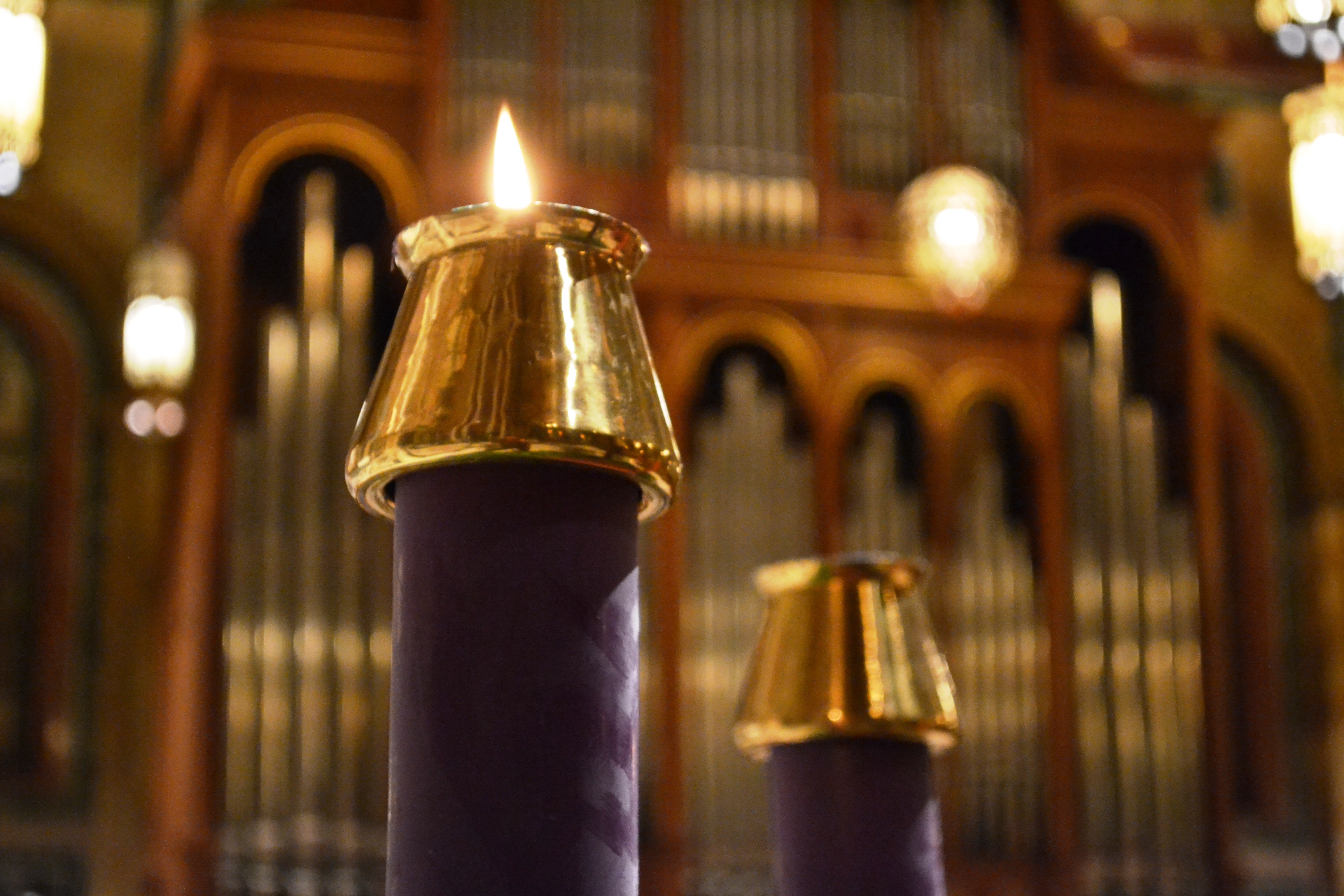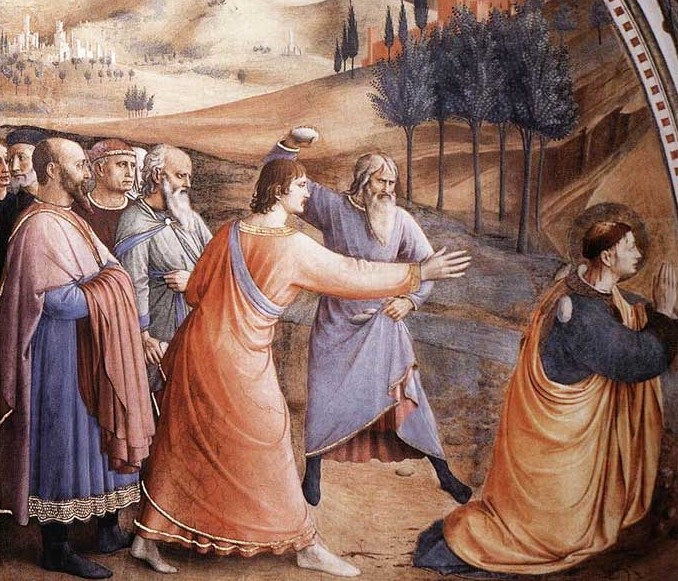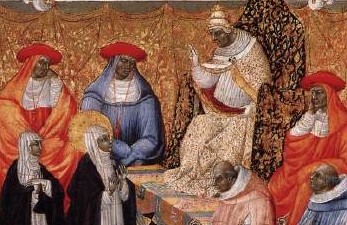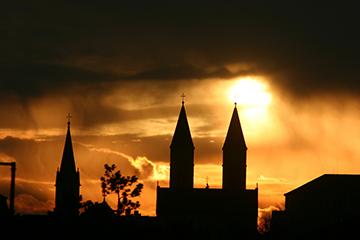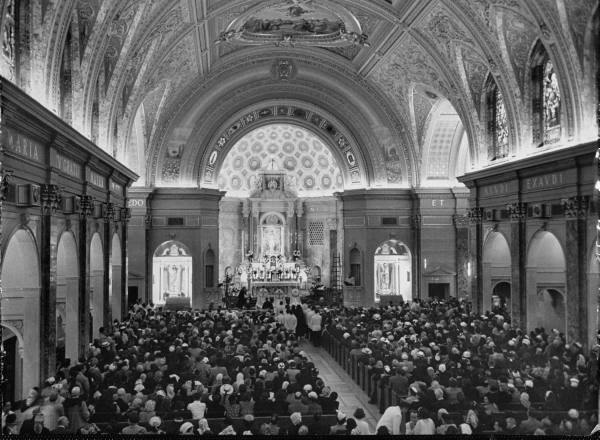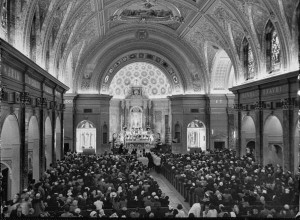The Following are “Five Advent Reflections” I have prepared. If these interest you I have prepared them also in PDF format which you can get by clicking here: The Season of Advent
1. Advent is Witnessed by Creation – Autumn and early winter are times of great seasonal change. The leaves turn brilliant colors then fade and fall. The shadows lengthen as the days grow shorter and colder. The warmth of summer and vacations seem distant memories and we are reminded once again that the things of this world last but a moment and pass away. Even so, we look forward as well. Christmas can be a wonderful time of year. Likewise, the winter ahead has delights. Few can deny the mesmerizing beauty of falling snow and the child-like excitement a winter storm can cause. Advent draws us spiritually into this season of change, of longing and of expectation. As the days grow shorter and the darkness increases we light candles on our Advent wreathes and remember that Jesus is the true light of the world, the light that shines in the darkness. These lit candles also symbolize our on-going commitment to come out of darkness into God’s own marvelous light. (cf 1 Peter 2:9). A Gospel Song says: Walk in the light, beautiful light, come where the dew-drops of mercy shine bright.
2. Longing for Salvation – Advent also draws us back to our Old Testament roots. Israel was taught by God through the prophets to expect a Messiah from God who would set them free from sin and injustice. Across many centuries there arose a longing and a yearning for this messiah. Sin and injustice had taken a terrible toll and so the cry from Israel went up:
O that thou wouldst rend the heavens and come down, that the mountains might quake at thy presence–as when fire kindles brushwood and the fire causes water to boil…We have all become like one who is unclean, and all our righteous deeds are like a polluted garment. We all fade like a leaf, and our iniquities, like the wind, take us away. There is no one that calls upon thy name, that bestirs himself to take hold of thee; for thou hast hid thy face from us, and hast delivered us into the hand of our iniquities. Yet, O LORD, thou art our Father; we are the clay, and thou art our potter; we are all the work of thy hand. Be not exceedingly angry, O LORD, and remember not iniquity for ever. Behold, consider, we are all thy people. (Is 64:1-7)
In Advent we recall these cries of ancient Israel and make them our own. Surely Christ has already come yet we know that sin and injustice still have their terrible effects in our lives and in our communities. We very much need Jesus to be our Savior and to daily set us free. Advent is a time to acknowledge our need for the saving work of God and to long for the glorious freedom of the children of God. We know that God has already begun this saving work in us, now we long for him to bring it to completion. We also await the full manifestation of his glory and this brings us to the second important meaning of Advent. .
3. Waiting for His Second Coming – Advent is also a time to prepare for the second coming of the Lord. We say in the Creed, He will come again in glory to judge the living and the dead. This truth flows directly from Scripture which teaches clearly two things on which we must reflect. First, He will come again in glory. Second we cannot know the day or the hour that he will return. In fact, though some signs will precede his coming, the emphasis of Scripture falls upon the suddenness of the event:
- He will appear like lightning (Mt 24:27),
- with the suddenness of the pangs of child birth (1 Th. 5:3)
- in the twinkling of an eye and the sound of a trumpet (1 Cor 15:52).
- It will take place when we least expect (Mt 24:44),
- Just when everyone is saying, “There is peace and security!” (1 Th. 5:3).
Since this is to be the case we must live lives of readiness for that day. Advent is a time when we especially reflect of the necessity of our readiness. Here too an Old Gospel Song sasy, Ready!? Are you ready? For the coming of the Lord? Likewise, a spiritual counsels, Keep your lamps trimmed and burning. The time is drawing nigh!
4. The Fire Next Time! – Some of the images of the last day, images of judgement and destruction, can seem very frightening indeed. Consider for example this passage from the Second Letter of Peter:
But the day of the Lord will come like a thief, and then the heavens will pass away with a loud noise, and the elements will be dissolved with fire, and the earth and the works that are upon it will be burned up. Since all these things are thus to be dissolved, what sort of persons ought you to be in lives of holiness and godliness, waiting for and hastening the coming of the day of God, because of which the heavens will be kindled and dissolved, and the elements will melt with fire! But according to his promise we wait for new heavens and a new earth in which righteousness dwells. Therefore, beloved, since you wait for these, be zealous to be found by him without spot or blemish, and at peace (2 Pt. 3:10-14).
Some of the imagery used here reminds us of the even more fearsome images of the Book of Revelation! But notice the complete message of this passage and others like it. The heavens and the earth as we know it will pass away but we who are ready look forward with joy to a “new heavens and a new earth” where the justice of God will reside in all its fullness. An African-American Spiritual summarized the teachings of the Second Letter of Peter by these classic lines, God gave Noah the rainbow sign, No more water, the fire next time. Here too, our first reaction to such phrases might be fear. But in the tradition of the spirituals, this fire was a fire of justice and truth that destroyed the power of injustice and oppression. Another spiritual expresses this, God’s gonna set this world on fire, one of these days Alleluia! [and] I’m gonna sit at the welcome table one of these days Alleluia! For the slaves, the Day of God’s visitation could only be a day of jubilee, a day of vindication and deliverance. And so it will be for us if we are ready. But what does it mean to be ready? To be ready is be living faithfully, holding to God’s unchanging hand in the obedience of faith and trust. To be ready is to be living a holy life and a life of repentance. If we do this we have not only have nothing to fear about the Last Day, we eagerly anticipate it and cry out, “Amen, Come Lord Jesus!” (Rev 22:20).
5. Remember, Repent, Rehearse – All these reflections help to place Advent in proper perspective for us. We are called to remember, repent and rehearse. We remember that Christ has already come and that he has called us to the obedience of faith and promised he will return in glory. We repent of whatever hinders our readiness for that day. And we rehearse for his second coming in glory by anticipating its demands and celebrating the glory that comes to those whom he finds watchful and ready. In a sense every Mass is a dress rehearsal for the glory of the kingdom. At every mass the following prayer is said, Deliver us Lord from every evil and grant us peace in our day. In your mercy, keep us free from sin and protect us from all anxiety, as we wait in joyful hope for the coming of our savior, Jesus Christ. This beautiful prayer recalls that it is entirely God’s work that we be ready for his glorious return. Only he can deliver us, free us from our sin and remove anxiety about that day. Only he can give us joy and make us holy. We have but to yield to his saving work.
And this brings us back to where we started, longing and yearning for our savior. To yearn for him is to know how much we need him. To long for him is to constantly seek his face and call upon his name. Therefore cry out with the Church, “Come Lord Jesus!” For it is written, The Spirit and the Bride say, “Come.” And let him who hears say, “Come.” And let him who is thirsty come, let him who desires take the water of life without price… He who testifies to these things says, “Surely I am coming soon.” Amen. Come, Lord Jesus! (Rev 22:17, 20)

